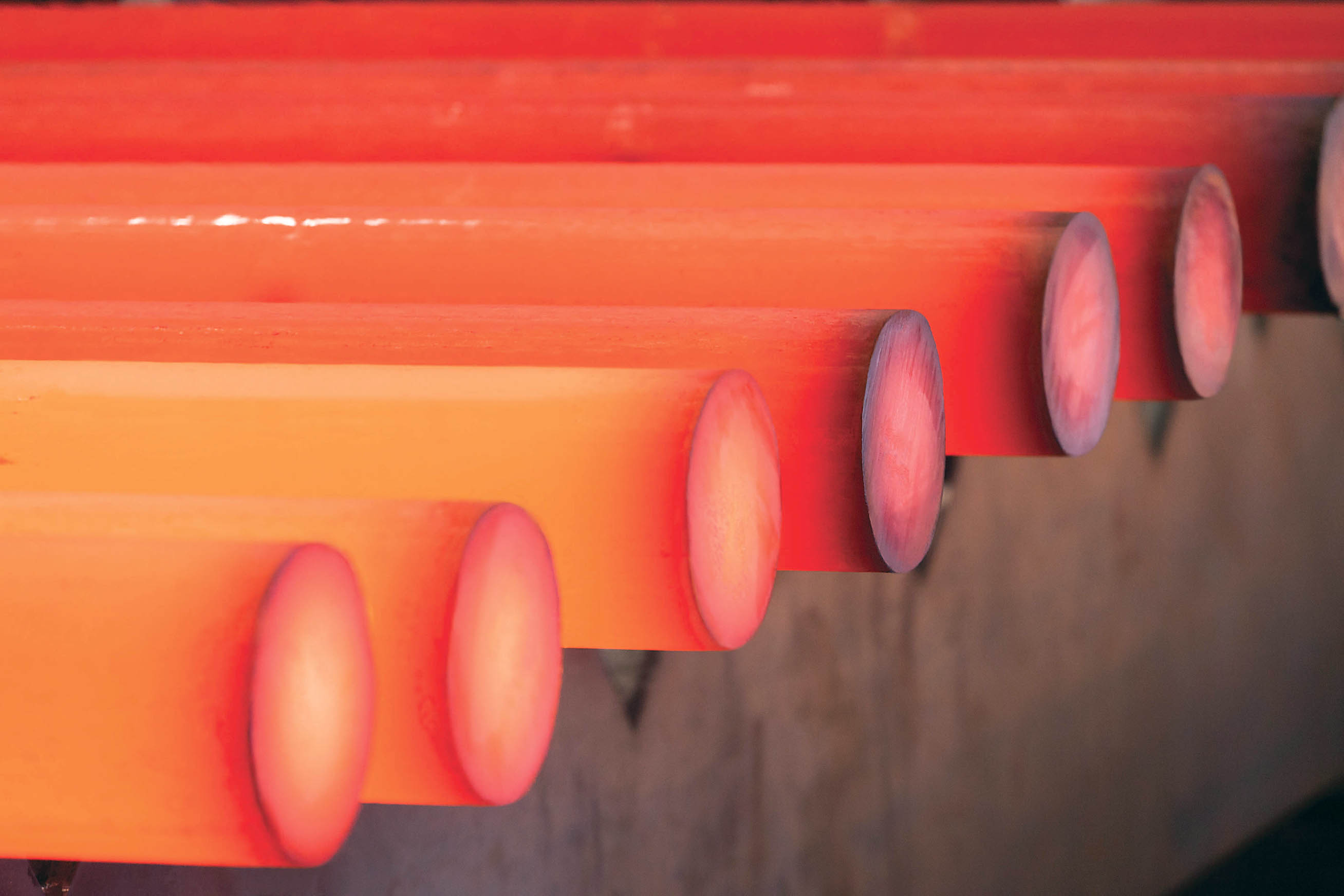Forging and casting are commonly used processes in gear manufacturing. While both provide product close to near net shape, forging offers several benefits casting can’t provide.
Due to solidification porosity and inclusion content, castings contain a greater number of defects that are more detrimental to overall strength when compared to forgings. While the American Gear Manufacturers Association (AGMA)’s metallurgical standards allow for cast material at the lower end of the quality range, average and higher-level quality expectations require material that has been hot worked through rolling and/or forging.
In addition, forging allows for meeting challenging ultrasonic testing (UT) requirements, which isn’t possible with casting alone. Ultrasonic inspection identifies voids from solidifications and inclusions. Because castings are extremely porous, they do not hold up to strict UT requirements.

Finally, a well-designed forging process optimizes material flow to enhance the performance of gears. Ideally, grain flow follows the general contour of the forging. A good forging design will ultimately eliminate end grain in critical areas of the forging while providing the greatest strength throughout.
Advanced Simulation
Much like TimkenSteel simulates complicated steelmaking processes, forgers like Canton Drop Forge use special software to model forging passes, ensuring proper fill and optimizing forging flow lines. Throughout this modeling process, designers have visibility to when the parts aren’t filling correctly, so they can identify and address necessary changes in the design early in the process, which reduces cost and improves first-time quality.
Simulation is also an effective tool for companies like Canton Drop Forge to use in involving customers more directly, allowing them to see programmable parts first-hand.
High-Quality Steel
As gear performance expectations grow, increased hot working reduction is required. The forger’s expertise and well-designed forging passes, combined with cost-effective hot-rolled bar, help produce low-cost gears that meet reduction requirements and optimize the shape and performance of the end product.

Further, improvements in steel grade design, manufacturing processes for existing grades and forging practices mean new opportunities are available to meet increasing customer demands with better products. When demands on gearing systems are extreme, working with the right forging and steel suppliers can quickly get customers to the most effective solution for gear performance.
As the overall quality of steel continues to advance and forging practices evolve, the combination of clean steel, proper grade selection, proper heat treatment and advanced forging processes allow for the creation of the next generation in gear quality — with materials designed to perform better and do more. If you’re a customer looking for a new gear solution, talk to your steel mill and forging experts to help find the one that’s right for your needs.























